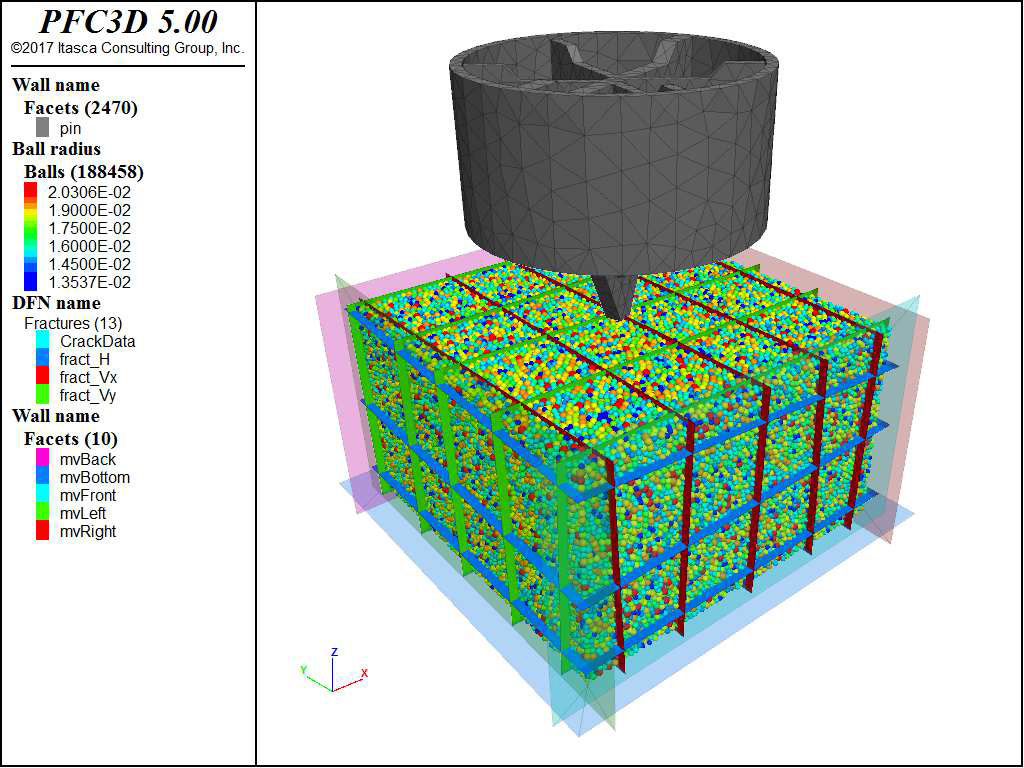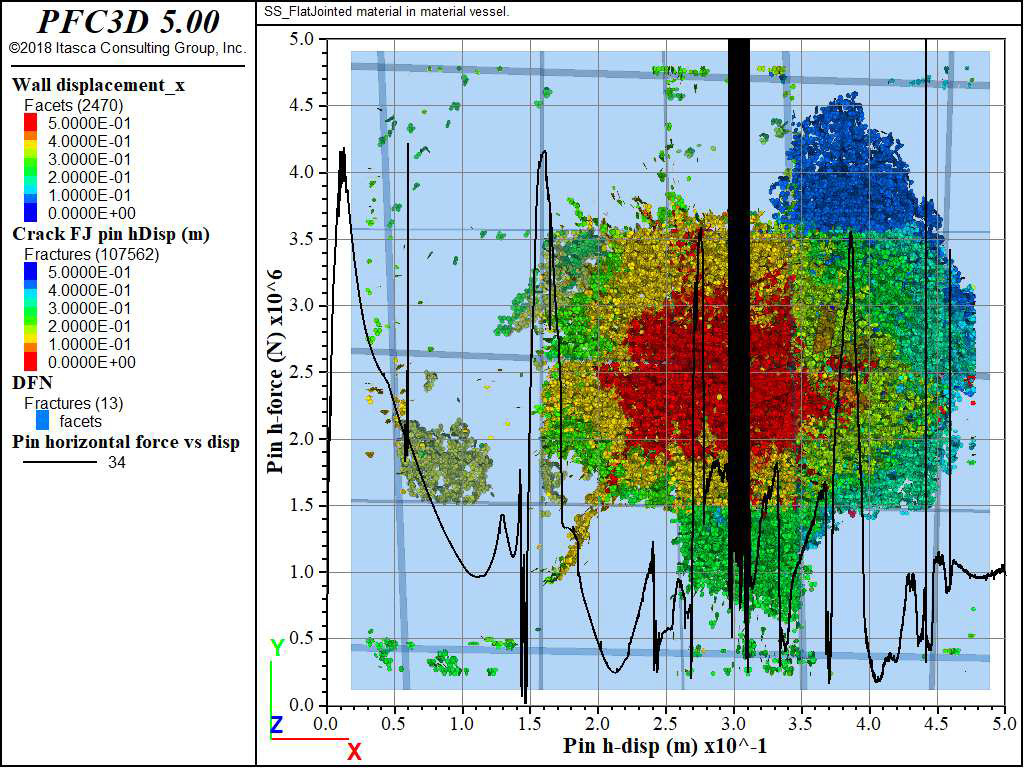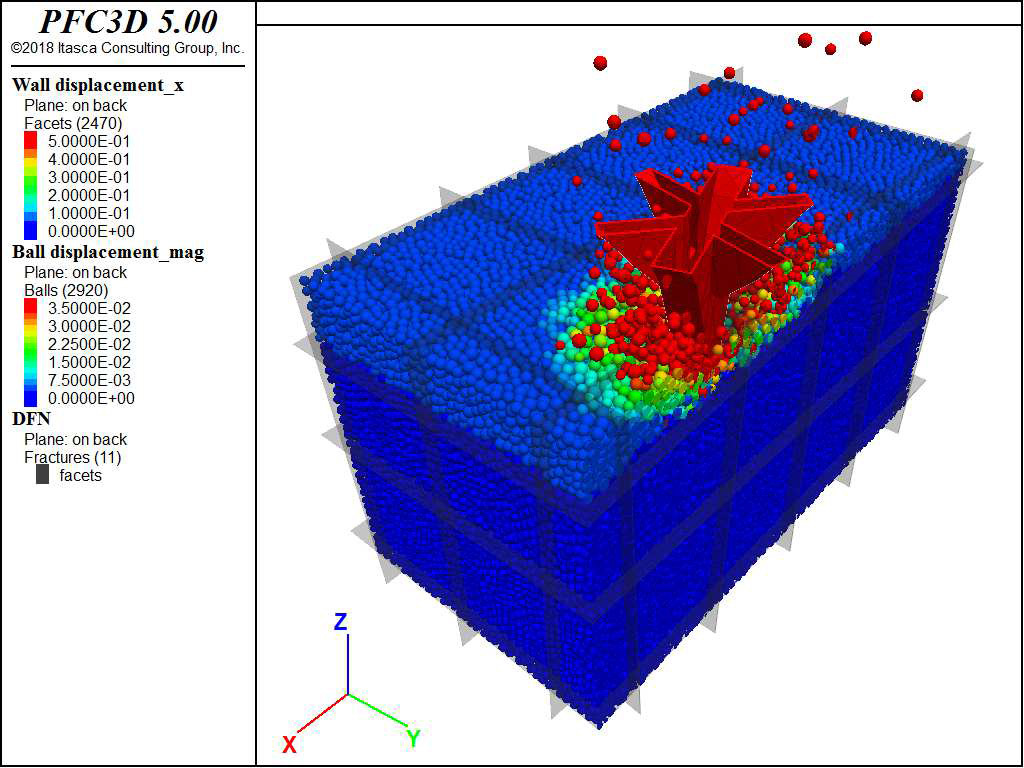Penetration of a Single Steel Foundation Pin in a Granitic Rock
Project Description
The development of a subsea tidal turbine requires specific research work concerning the design of the foundation in contact with the seabed. This design stage can be simplified by the use of numerical modelling and more particularly by using discrete modelling. HydroQuest asked Cathie Associates to check their previous calculations regarding the behavior of a single steel foundation pin in a granitic rock mass by using Itasca’s discrete numerical approach and follow the forces applied to the pin as well as the state of the damaged zone around the tip during penetration.
Itasca's Role
Model with Cathie Associates the two main stages that strongly stress the pin: the installation phase in the rock (vertical penetration) and the operational phase (shearing due to swell). Verify penetration resistance according to the ballast weight then develop a servo-control mechanismto maintain the vertical force to the pin during its displacement. Conduct a series of numerical investigations with PFC3D to test various conditions and help Cathie Associates assess the risks associated with the foundation design and installation procedures.
Project Results
The vertical force required to penetrate the rock (considering the mechanical properties of the rock and its fracture network) is consistent with the empirical results. The geometry of the fracture network has a very strong influence on the propagation of fractures and therefore on the observed mechanical behaviour. The reaction force on the pin recorded during its displacement exhibits large fluctuations: energy accumulates in the vicinity of the pin until a sudden break of the pre-existing bonded contacts.
Project Image(s)




